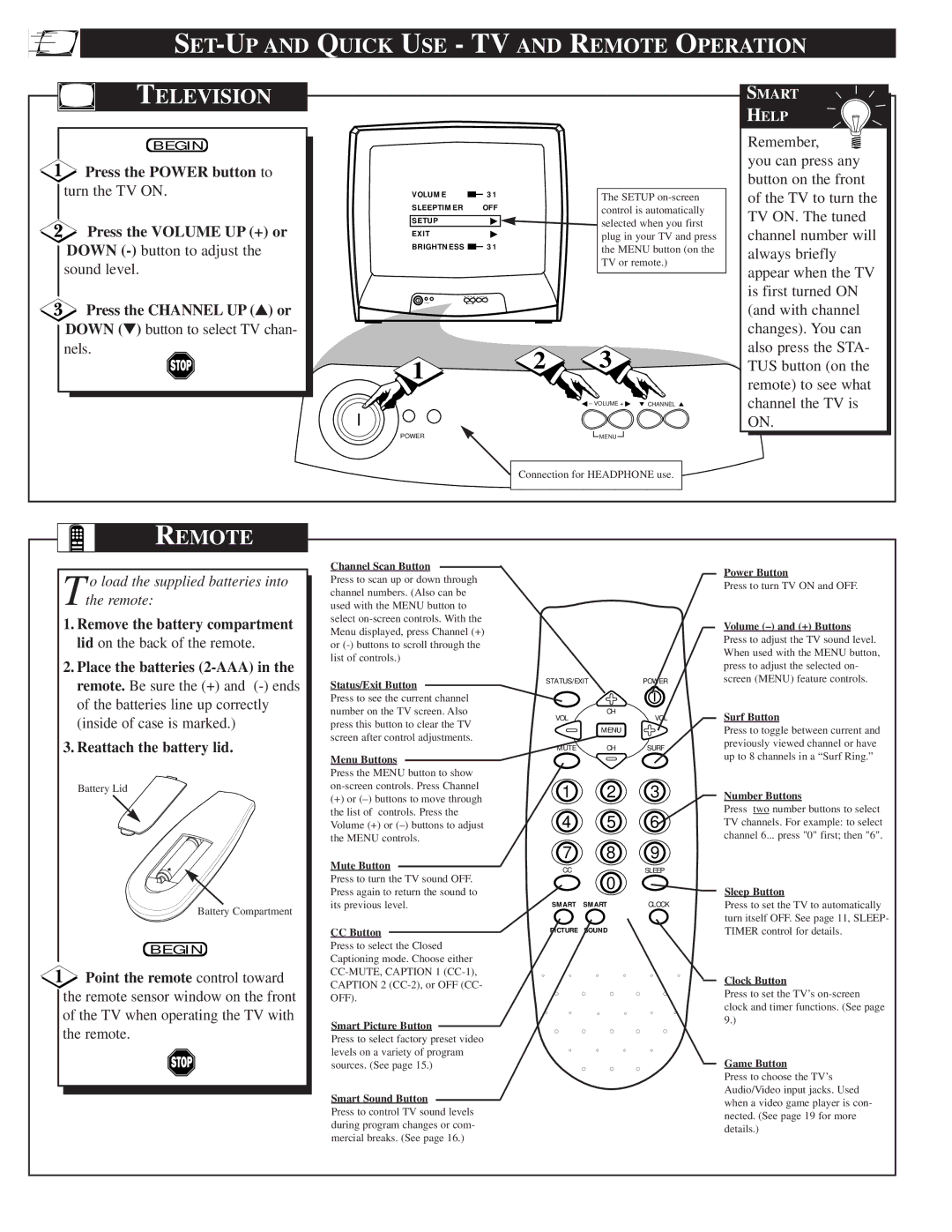PS 1964C specifications
The Philips PS 1964C is a standout turntable that embodies the charm and quality of vintage audio equipment. Launched in the mid-1960s, this model was designed to cater to audiophiles seeking a superior listening experience. Combining technological innovation with timeless aesthetics, the PS 1964C is a remarkable piece of engineering.One of the key features of the Philips PS 1964C is its belt-driven mechanism. This design minimizes vibrations from the motor, allowing for smoother playback and improved sound quality. The belt drive system is essential in maintaining the integrity of the audio signal, making it a preferred choice among audiophiles looking for accuracy in sound reproduction.
The PS 1964C also boasts an automatic tonearm mechanism, which simplifies the user experience. This feature allows the tonearm to automatically lift and return to its rest position at the end of a record, preventing wear on both the stylus and the vinyl. This automation strikes a balance between convenience and precision, ensuring that users can enjoy their records without the hassle of manual operation.
The turntable is equipped with an adjustable counterweight and an anti-skating mechanism, which ensures that the stylus maintains optimal tracking force throughout playback. These characteristics help reduce record wear and distortion, resulting in clearer audio output. The adjustable settings cater to various cartridge weights, adding versatility for users who may choose to upgrade their stylus.
Another notable aspect of the Philips PS 1964C is its elegant wooden plinth. This not only enhances the aesthetic appeal of the turntable but also contributes to its overall stability by reducing unwanted resonance. The design reflects the craftsmanship of the time, making it a beautiful addition to any audio setup.
In terms of connectivity, the PS 1964C offers a standard RCA output, allowing for easy integration with a variety of amplifiers and speakers. This flexibility ensures that users can easily connect their vintage turntable to modern audio systems, preserving the classic sound without compromising on quality.
With its combination of classic design and advanced features, the Philips PS 1964C remains an enduring favorite among vinyl enthusiasts. Its blend of aesthetic beauty and audio precision captures the essence of the golden age of analog sound while still appealing to the needs of contemporary listeners.

